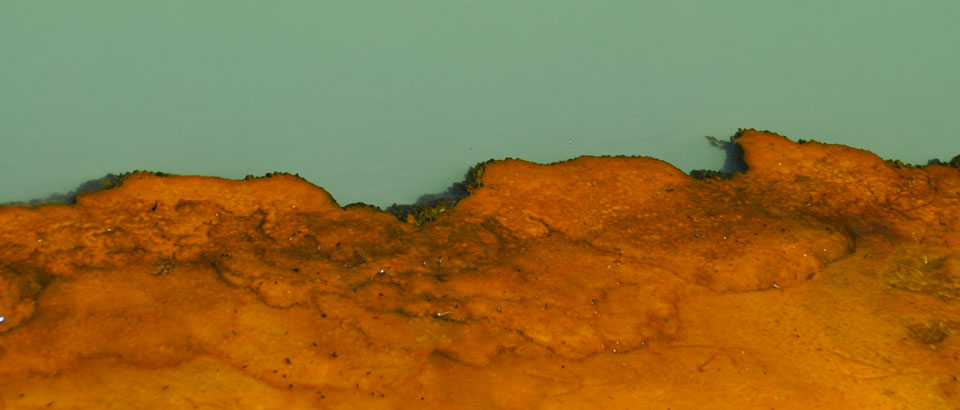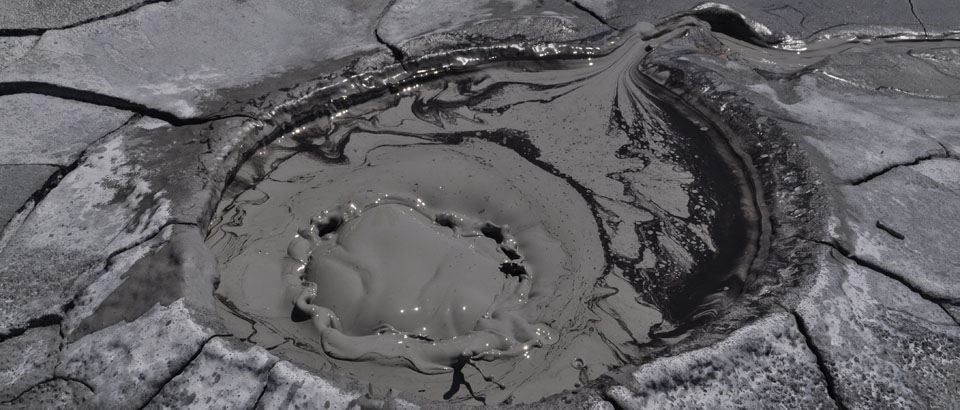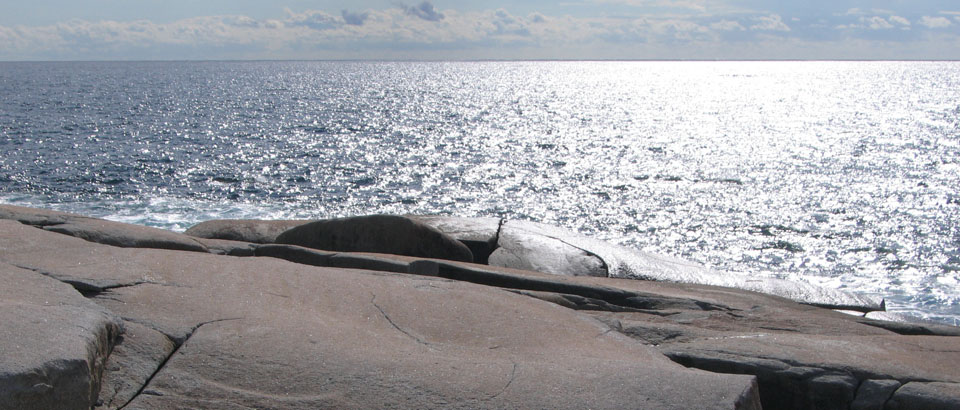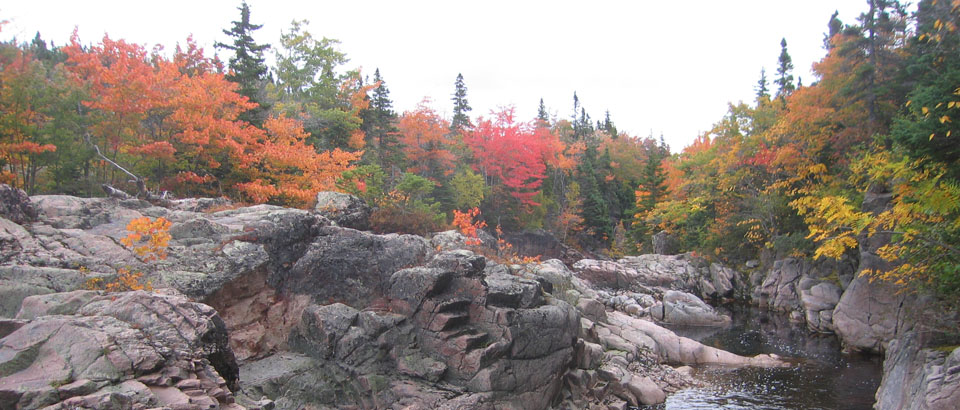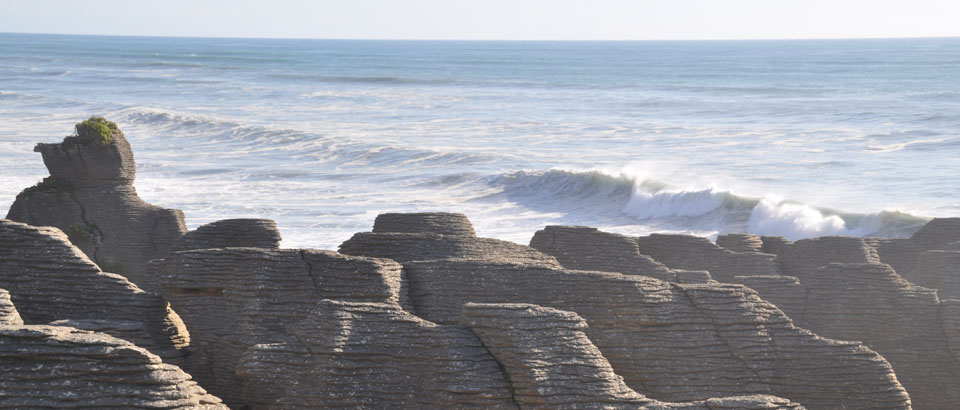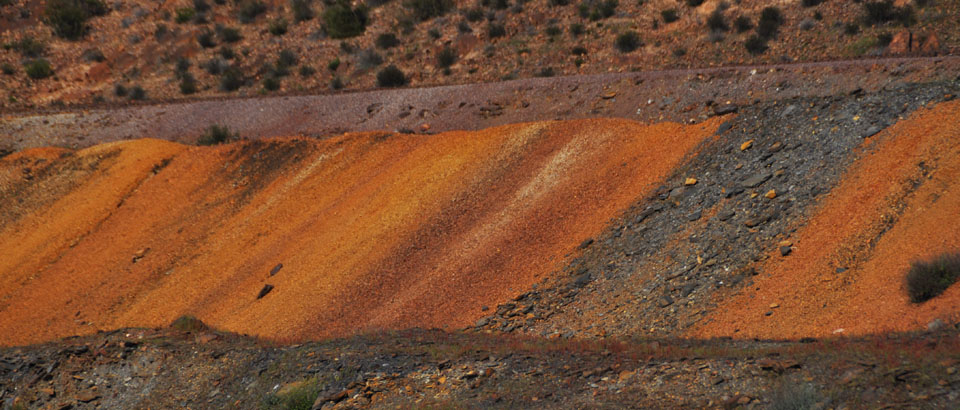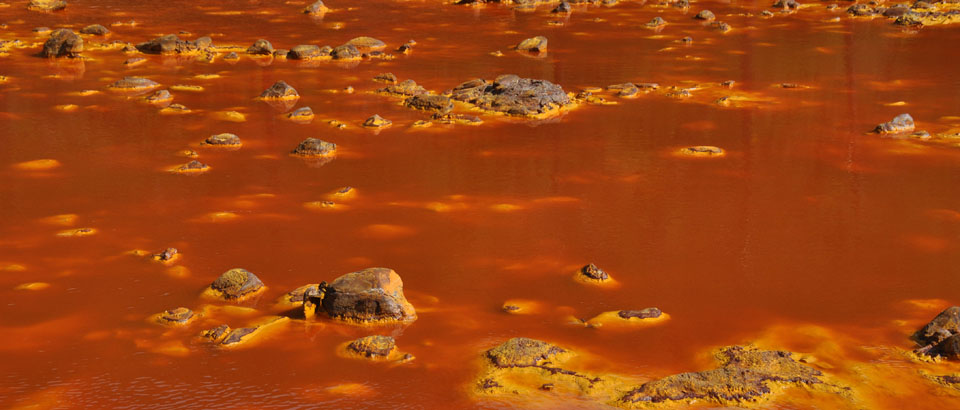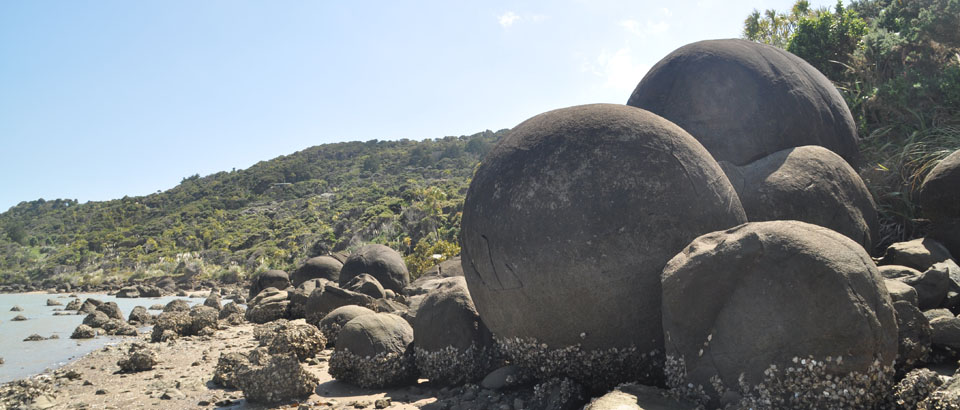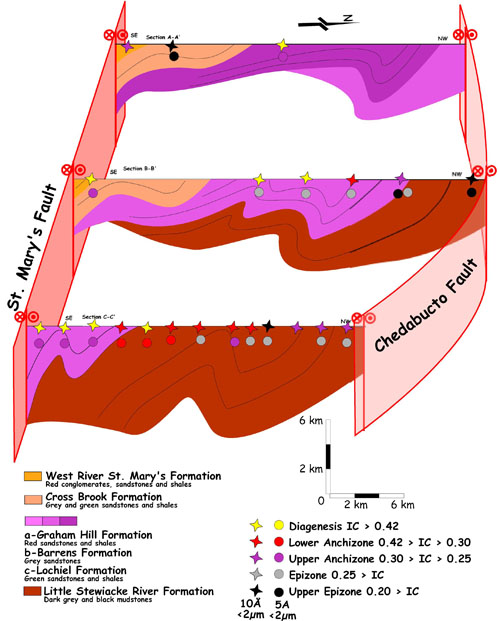Diagenesis to Metamorphism Transition in an Epi-sutural Basin: The Late Paleozoic St. Mary’s Basin, Nova Scotia, Canada. I. Abad, J.B. Murphy, F. Nieto, G. Gutiérrez-Alonso. 2010. Canadian Journal of Earth Sciences, 47, 121-135. DESCARGAR-DOWNLOAD
RESUMEN-ABSTRACT
The Late Devonian – Early Carboniferous St. Mary’s Basin in the Canadian Appalachians consists of Horton Group fluviatile and lacustrine clastic rocks. The basin occurs along the boundary between the Avalon and Meguma terranes and developed during coeval dextral shear along that boundary. X-ray diffraction reveals that the rocks contain ubiquitous quartz, K-white mica, and albite; illite–smectite mixed layers and chlorite are very common and Na–K mica, kaolinite, chlorite–smectite mixed layers, K-feldspar, berthierine, and rutile occur in some samples. Crystal-chemical parameters of white mica indicate the pressure and temperature of mineral growth and discriminate between diagenetic, anchizone, and low-grade metamorphic processes. Ku¨bler index values measured in the 5 A° peak and the presence of chlorite–mica stacks are indicative of high-anchizone–epizone grades, with a crystallinity (crystal size and number of defects) that increases towards the Chedabucto Fault, which defines the northern margin of the basin. Ku¨bler index values measured in the 10 A° peak indicate that a late fluid-rich event could have produced the observed illite–smectite mixed layers. The overall clay-mineral content and the b-cell dimension of the K-white micas are typical of postdepositional evolution in extensional sedimentary basins with high heat flow (>35 8C/km). Taken together, our data record two superposed events related to deformation along the basin margins and coeval regional fluid flow, in which retrograde reactions at temperature T < 200 8C were superimposed on a pre-existing prograde assemblage typical of high-anchizone – lower greenschist-facies conditions (T > 300 8C). Regional syntheses indicate that this fluid flow may have occurred during episodes of Late Carboniferous dextral shear along the Avalon–Meguma terrane boundary.


